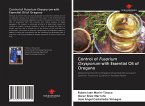Antibacterial effects of quinolone antibiotics are by binding to complexes that form between DNA and DNA gyrase. Shortly after binding, the quinolones cause a molecular change to the DNA gyrase enzyme (Hashem et al., 2013). In this respect, mutations of gyrase or topoisomerase IV enzymes cause quinolone resistance (Hooper, 1999) which may be the cause of the intermediate resistance of E. coli from cheese, Enterobacter cloacae from egg and Enterobacter spp. from milk to Nalidixic acid as the mutations responsible for reduce the affinity of the enzyme-DNA complex to quinolones (Willmott and Maxwell, 1993).
Hinweis: Dieser Artikel kann nur an eine deutsche Lieferadresse ausgeliefert werden.
Hinweis: Dieser Artikel kann nur an eine deutsche Lieferadresse ausgeliefert werden.








